Advertisement
Slammed by climate emergencies, Mass. farmers ask, 'Now what?'
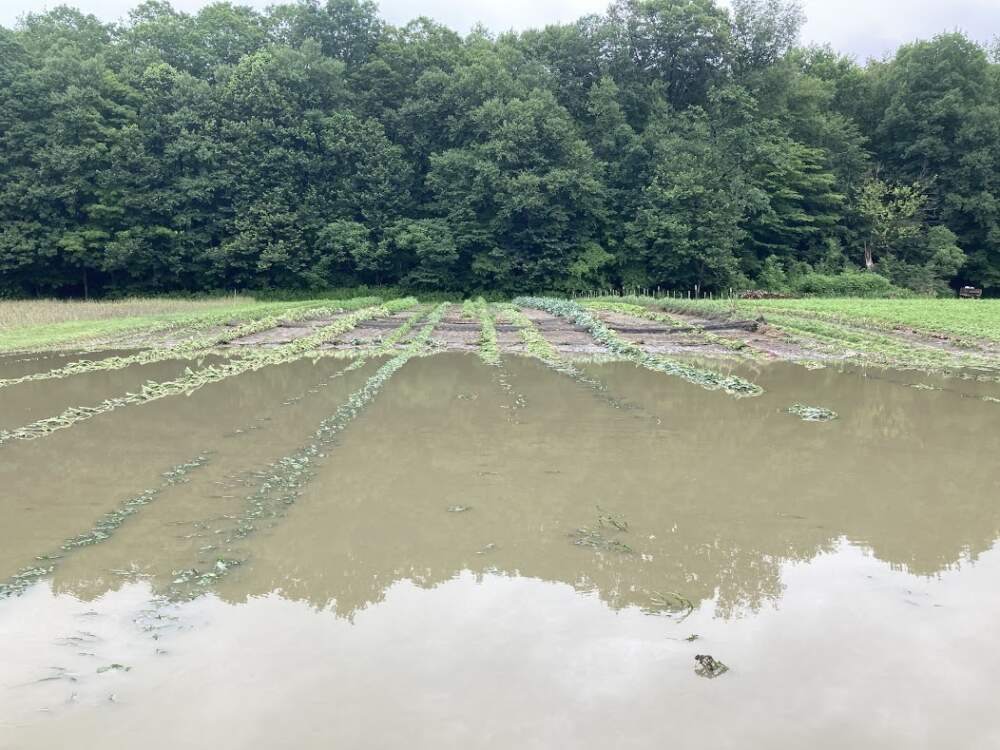
Meryl LaTronica stood on her farm, gesturing to a field of muck. It looked bad and smelled worse: an off-putting combination of musty basement and rotten vegetables.
"That field is one of our wettest," said LaTronica, director of farm operations at Just Roots, a community farm in Greenfield. "There are three beds of tomatoes that are dead. Our hot peppers, we'll probably just get that first 10 feet."
Just Roots is a small farm like many in Massachusetts. But it grows enough food on seven acres to serve about 500 farm-share customers, most of whom are on food assistance. The torrential rains in July hit the farm hard, drowning fields of tomatoes, squash and zucchini.
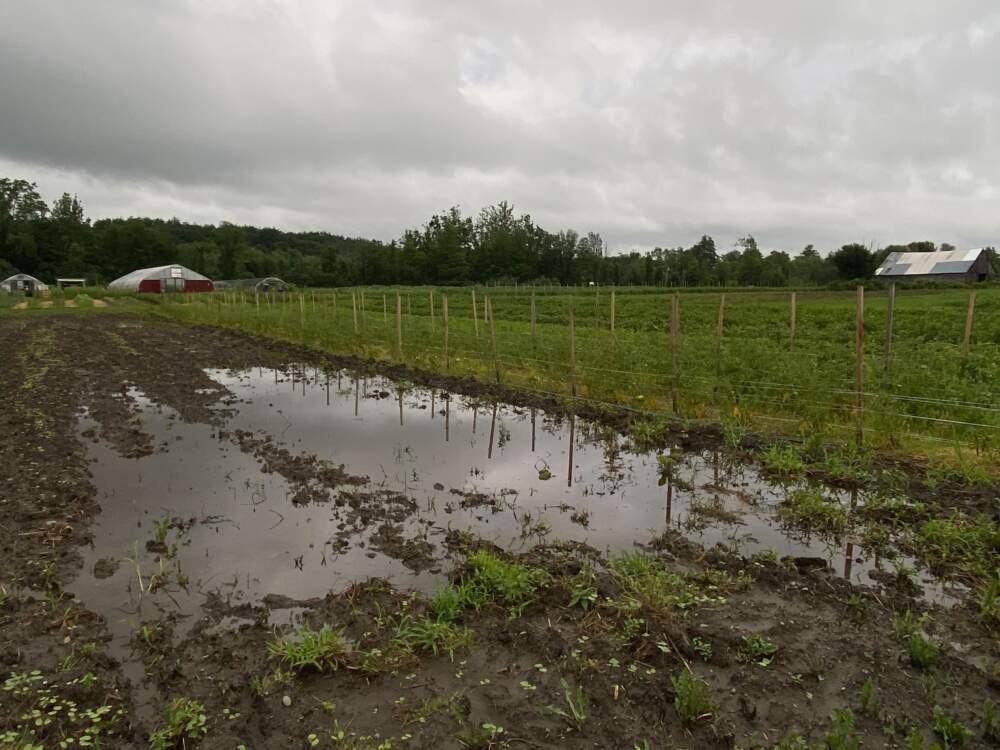
LaTronica said the farm will lose close to $100,000 worth of crops. But at least it didn’t lose everything. Some of the corn survived, there are potatoes, beets and kale for the farm share, and the pick-your-own flowers and raspberries are thriving.
"We had a great garlic harvest before everything got too bad," she added. We "just sort of rolled into July, pretty confident and hopeful. And yeah, July served up...not the sandwich we were hoping for."
It’s been a rough year for Massachusetts farmers. It started with a deep freeze in February that killed most of the peach and plum crops. Then a May frost ruined a lot of the blueberries and apples. July brought heavy rains and floods.
All told, the crazy weather has ruined nearly 3,000 acres of crops in the state, affecting more than 100 farms and costing about $15 million, according to Department of Agricultural Resources. And it's left farmers asking themselves a pretty big question: how to keep farming in a rapidly changing climate.
"When people think about climate change and its impact on Massachusetts, their first thought is Boston Harbor" and sea-level rise, said U.S. Senator Ed Markey, speaking at an event in Western Massachusetts about aid for farmers.
Advertisement
"But what people don't focus on are the 22,000 Massachusetts citizens engaged in farming and the impact climate change is having upon them, and the very real and potentially existential threat that it poses to their way of life."
David Fisher and Maggie Toran run Natural Roots farm in Conway. The downpours in July led to a flash flood of the South River, which put their fields under several feet of water. Toran said the flood reminded her of Hurricane Irene in 2011. Except then, they had a few days of warning.
"For Hurricane Irene, we had three days to prepare: to harvest crops, to move implements, to move animals," Toran said. "This was, we were having our morning meeting, and when we came down, our fields were flooding and we had to act very, very quickly."
The farmers waded through chest-high water, trying to grab chickens that were being swept downstream. They saved most of the chickens, but almost all the crops were lost.
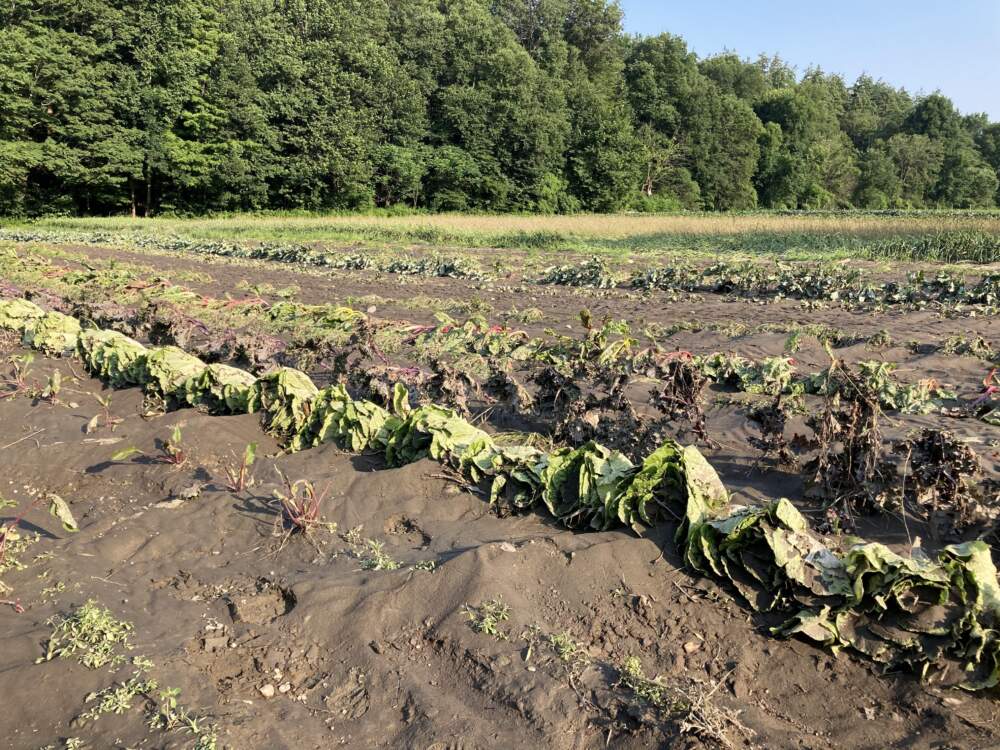
The farm started a GoFundMe campaign, and might get some of the $20 million the state recently set aside for flood relief. Gov. Maura Healey also launched the "Massachusetts Farm Resiliency Fund” with the United Way to raise private money for farmers. And the U.S. Department of Agriculture has labeled seven Massachusetts counties as natural disaster areas, allowing farmers to apply for federal low-interest loans and tap into the Emergency Conservation Program for clean-up costs.
The aid could help their farm this year, said Fisher. But it’s hard to know how to plan for the future, when the climate disasters keep piling on.
"What is the wise thing and what is the foolish thing?" he asked. "To continue to do the same thing when we're getting whacked like this seems kind of foolish, but it's not easy or obvious to know what to do."
A lot of farmers are asking themselves the same question, because as the Earth gets warmer, extreme weather is becoming the norm. Bernadette Woods Placky, chief meteorologist at the non-profit Climate Central, said farmers now have the tricky task of preparing for unpredictable weather.
"When we add more heat to our Earth's system ... it plays out in many different ways," said Placky. It can be severe drought, like last summer. Or downpours and floods, like this year. Or frost at an unexpected time.
"What we plant, when and where is based on a stable climate that we've had for decades to hundreds of years, and that is changing," she said.
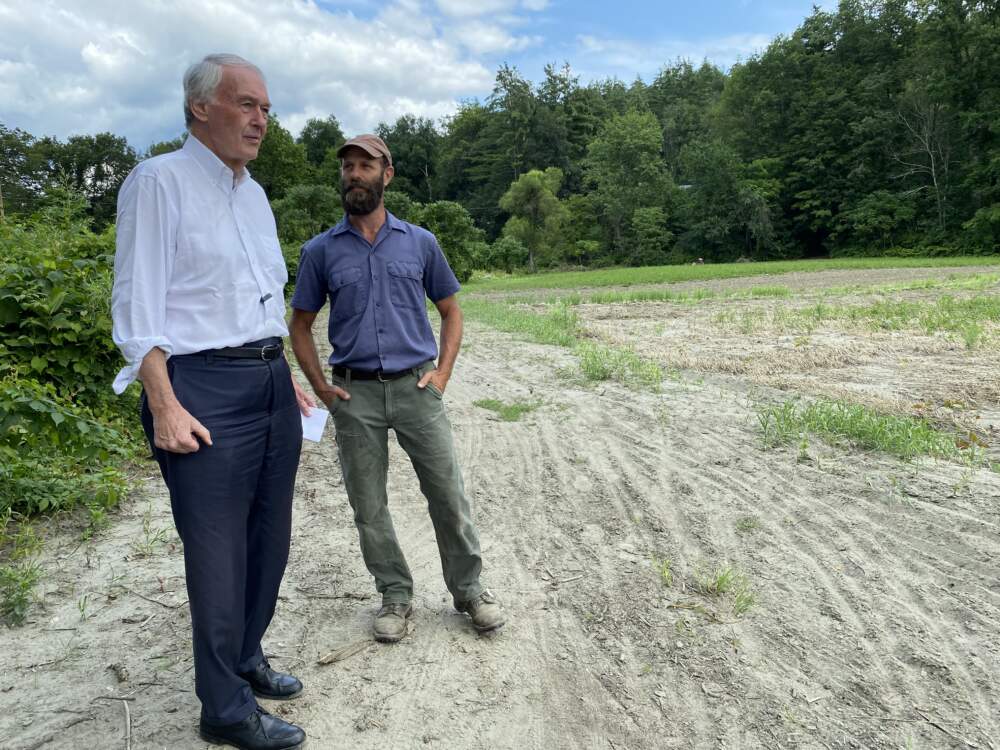
"Unfortunately we are at the whim of Mother Nature and there's more extreme climate events," said Ashley Randle, commissioner of the Massachusetts Department of Agricultural Resources. "The farmers are continuing to find ways to adapt."
One of those farmers is Meredith Wecker, who runs a 55-acre low-bush blueberry farm called The Benson Place in Heath with her partner Andrew Kurowski. They lost almost the whole crop in a late frost that killed the fruit blossoms before they were pollinated.
"We're looking into what kind of investments we can make to protect the farm from these increased extreme weather events," said Wecker. She's considering whether to invest in acres of "row cloth" to cover the best bushes during a surprise frost.
"I don't know if it's practical. Like, how many people would it take to lay it out quickly before the frost comes?" she asked. Could their loyal customers be summoned as an emergency frost protection team? Maybe. "If we had to use it once every 10 years and it saved $200,000 of blueberries from being lost and everyone could still have blueberries, it could be worth it."
"Farmers are uniquely engaged with the climate as it's changing," said Laura Fisher, executive director of Just Roots farm in Greenfield. "We're outside, we're working with the soil. We're witnessing the weather events. And I think there are ways for agriculture to be integrated into the solution."
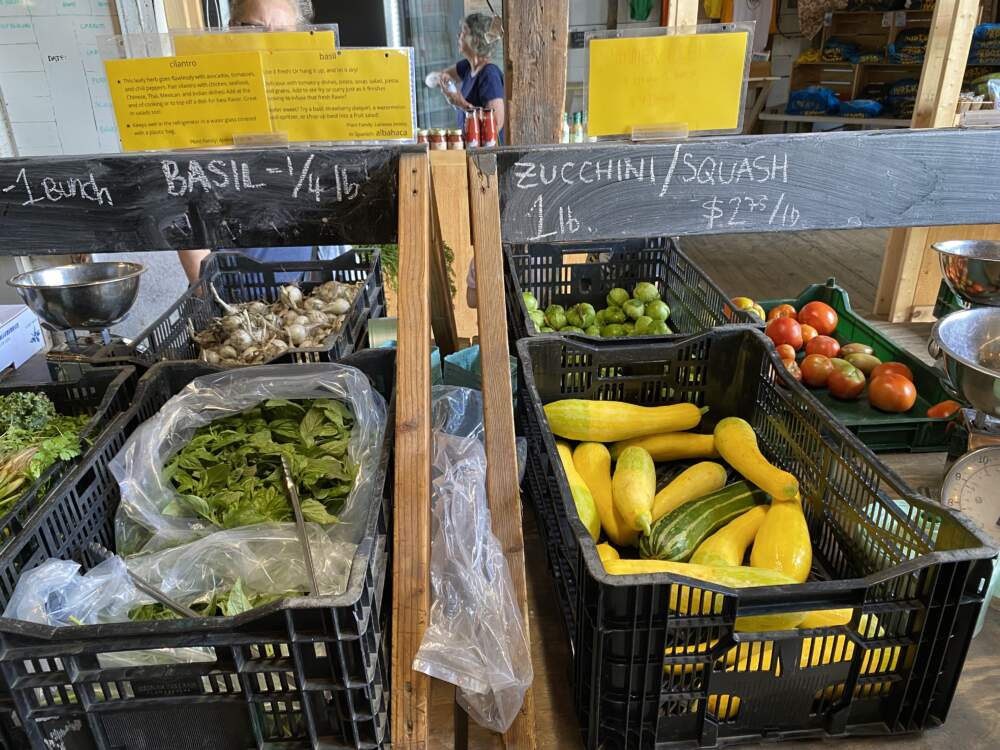
Being part of the solution to climate change could mean finding ways to use less water and fossil fuels, and paying more attention to healthy soil that stores carbon.
As the climate changes, local farmers will have to adapt. Right now New England farms produce only about 12% of the food eaten in the region. But climate change will likely lead to huge disruptions in the global food supply. And both farmers and food experts say that makes it even more important to figure out how to keep growing food close to home.
